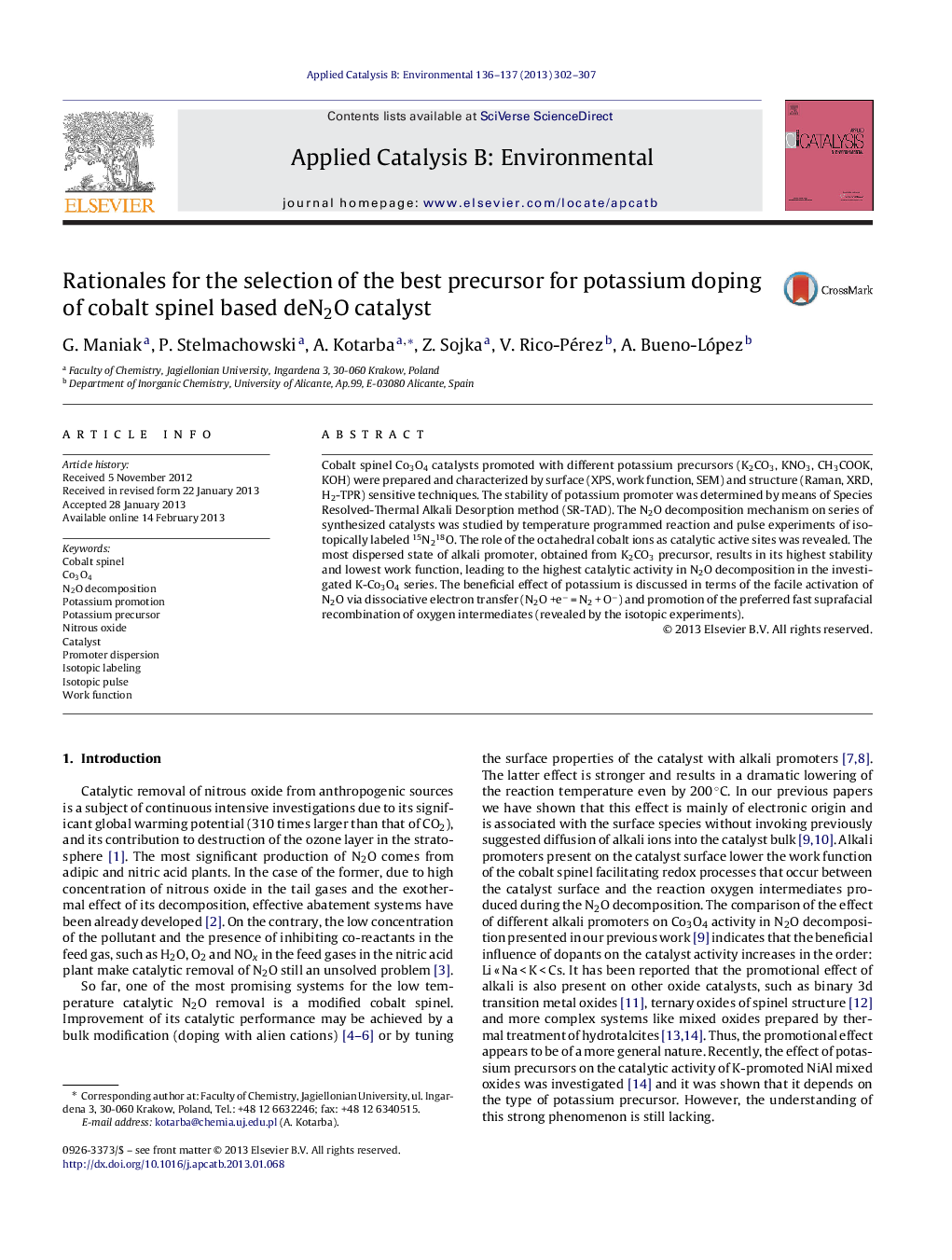| Article ID | Journal | Published Year | Pages | File Type |
|---|---|---|---|---|
| 46338 | Applied Catalysis B: Environmental | 2013 | 6 Pages |
Cobalt spinel Co3O4 catalysts promoted with different potassium precursors (K2CO3, KNO3, CH3COOK, KOH) were prepared and characterized by surface (XPS, work function, SEM) and structure (Raman, XRD, H2-TPR) sensitive techniques. The stability of potassium promoter was determined by means of Species Resolved-Thermal Alkali Desorption method (SR-TAD). The N2O decomposition mechanism on series of synthesized catalysts was studied by temperature programmed reaction and pulse experiments of isotopically labeled 15N218O. The role of the octahedral cobalt ions as catalytic active sites was revealed. The most dispersed state of alkali promoter, obtained from K2CO3 precursor, results in its highest stability and lowest work function, leading to the highest catalytic activity in N2O decomposition in the investigated K-Co3O4 series. The beneficial effect of potassium is discussed in terms of the facile activation of N2O via dissociative electron transfer (N2O +e− = N2 + O−) and promotion of the preferred fast suprafacial recombination of oxygen intermediates (revealed by the isotopic experiments).
Graphical abstractFigure optionsDownload full-size imageDownload as PowerPoint slideHighlights► K2CO3 is the best precursor for Co3O4 promotion. ► Catalytic activity in N2O decomposition correlates with Co3O4 spinel work function. ► K promotes activation of N2O via e- transfer and suprafacial oxygen recombination.
